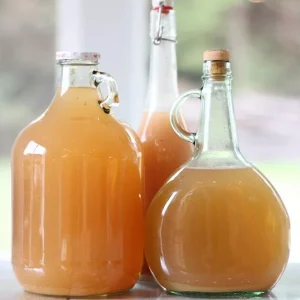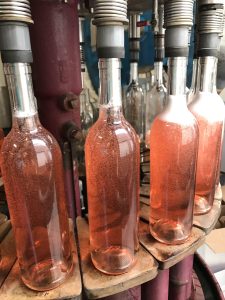
You all know by know what our company does. Have you heard the story of how we started? Officially opening up in January 2010, Vinmetrica was founded on the belief that Rich could put together products that would help winemakers like him. After a series of events involving several years of working as a research scientist at Eli Lilly, a move to Northern California and eventually an over abundance of apricots off a tree in Rich’s new backyard, the idea for Vinmetrica was born.
Rich followed the typical progression of the home winemaker we still encounter today. He began making apricot jam but had so much excess fruit that he decided to try his hand at winemaking and the eventual study of fermentation chemistry. Graduating from fermenting fruit to condensed juices, then to wine kits and finally to grapes. After a while he was confronted with the task of measuring sulfite levels.
With a background in analytical chemistry, Rich had a thorough understanding of measuring sulfite levels via the Ripper titration method and after a quick visit to a local winemaking store Rich returned with some Chemetrics Titrets. Despite knowing that they were not all that suitable for red wines, Rich kept trying to use them for a whole season before finally giving up… Determining the endpoint was not reproducible. There had to be another way!
Eventually landing on the iodine titrations Rich had done as an undergraduate he remembered how he could see a faint yellow iodine color about the same time as his cobbled together electrode system read an endpoint. This was all a lesson in using electrochemistry to detect an endpoint rather than a color indicator. And thus Vinmetrica, or at least the idea for it, was born.
Two platinum electrodes, disused equipment at work, a few components from Fry’s Electronics, and an output that he read with his voltmeter.. that’s how it all started. Wasn’t much to look at, but he found he could get reproducible results in minutes. This was about 1995. He used this setup for years in his garage.
Then, in 2008, after being let go from a position as the VP of Reagents and Assays at Molecular Devices and with a little bit of encouragement from his wife, Rich decided to start Vinmetrica. The company was founded on Rich’s desire to make the vintner’s job easier and more predictable.
His first task was to hire some employees so he hired his two sons (Richie & Tim) to fulfill various positions and needs for the company, as they could pop in and out easily while still attending college. As the company grew, his need for additional employees also grew and he eventually hired one of his step daughters (Karolyn) but she was about to leave for a study abroad program, so he decided to hire his other step daughter (Taylor) to fill the position as she had just graduated from college with a degree in Biology. And finally, the last family hire was Rich’s stepson (Bryan), who joined us for a few years after he graduated college. Throughout the past 13 years, Vinmetrica has only hired one non family member (Rachel). She was with us for several years before moving on to bigger things.
These days, our entire operation is family owned and operated; being completely ran by Rich, Taylor and Tim (with some IT help from Richie occasionally). We have expanded from a small operation selling direct to customers to now having over 10 distributors in the US plus 8 international distributors. Every item we sell comes through the doors of our warehouse in Carlsbad, CA before it is loving packaged and sent out.
When we say we are a small business, we mean it! And we thank our customers each and every day for supporting us! We wouldn’t be here without you.

 Periodically we get asked about making non-grape wines and if/how our equipment can test for the same parameters when different fruits, vegetables or flowers are used. We thought we would explain how the test kits that we offer may need to be adapted to test a non-grape wine.
Periodically we get asked about making non-grape wines and if/how our equipment can test for the same parameters when different fruits, vegetables or flowers are used. We thought we would explain how the test kits that we offer may need to be adapted to test a non-grape wine. This is a regularly debated topic that deserves some attention. We’d like to refer you to a
This is a regularly debated topic that deserves some attention. We’d like to refer you to a  This time of year, when vineyards are quiescent, many of us use the downtime for bottling. At Vinmetrica’s sister company
This time of year, when vineyards are quiescent, many of us use the downtime for bottling. At Vinmetrica’s sister company  We get this question a lot so we thought we would discuss it here. [Note: Most of this information is available on our troubleshooting guide under
We get this question a lot so we thought we would discuss it here. [Note: Most of this information is available on our troubleshooting guide under